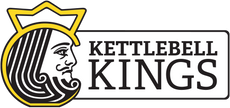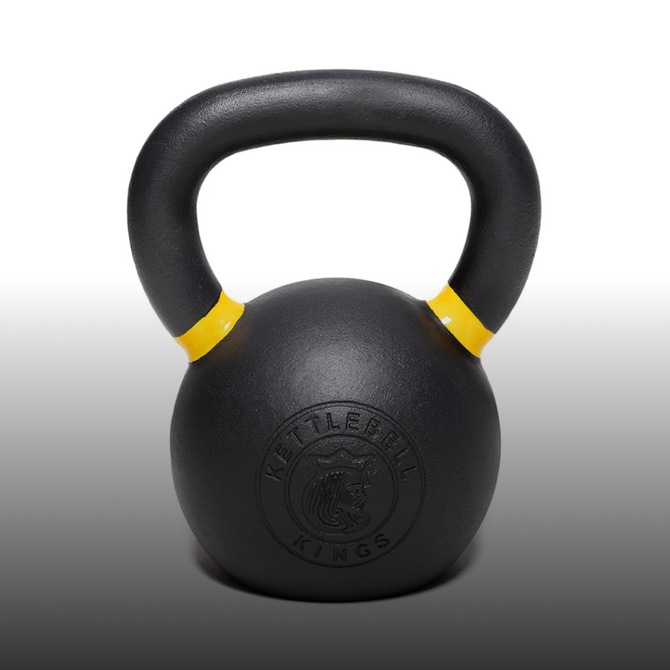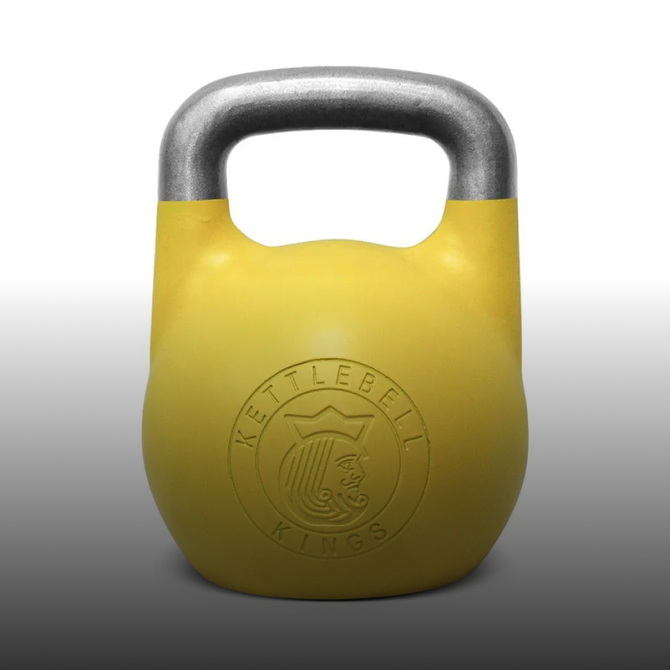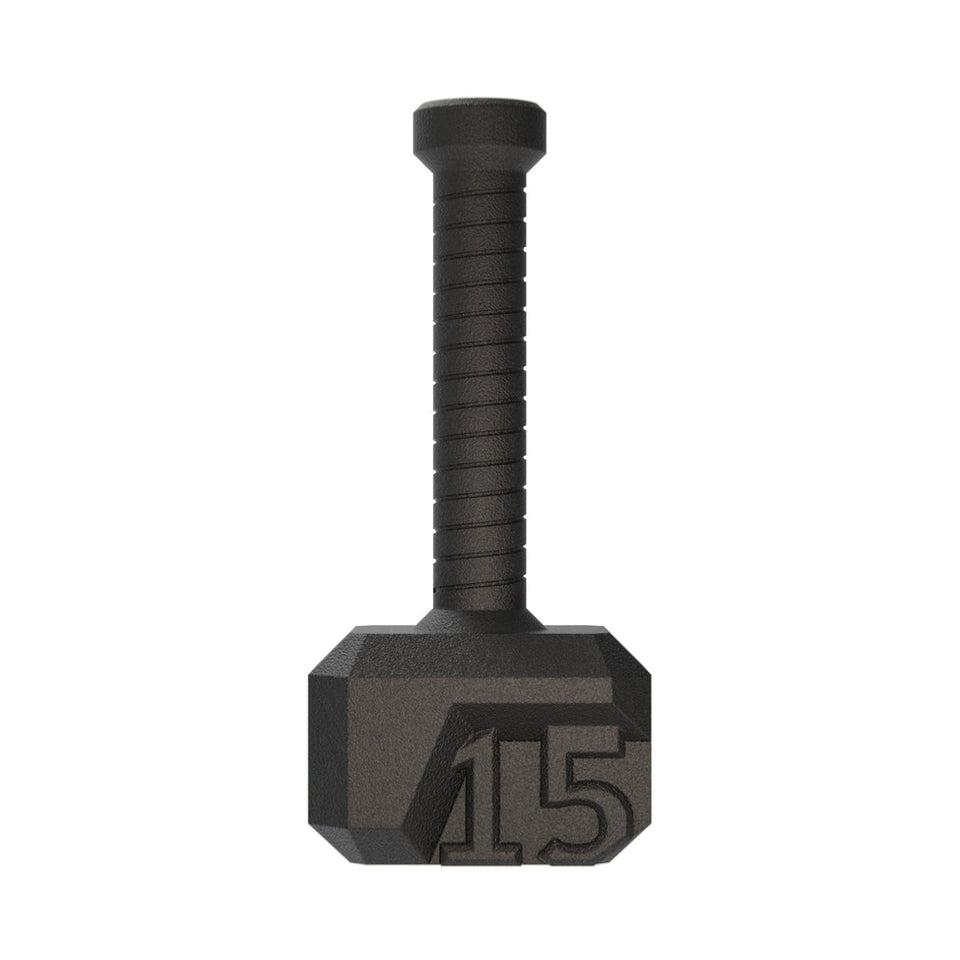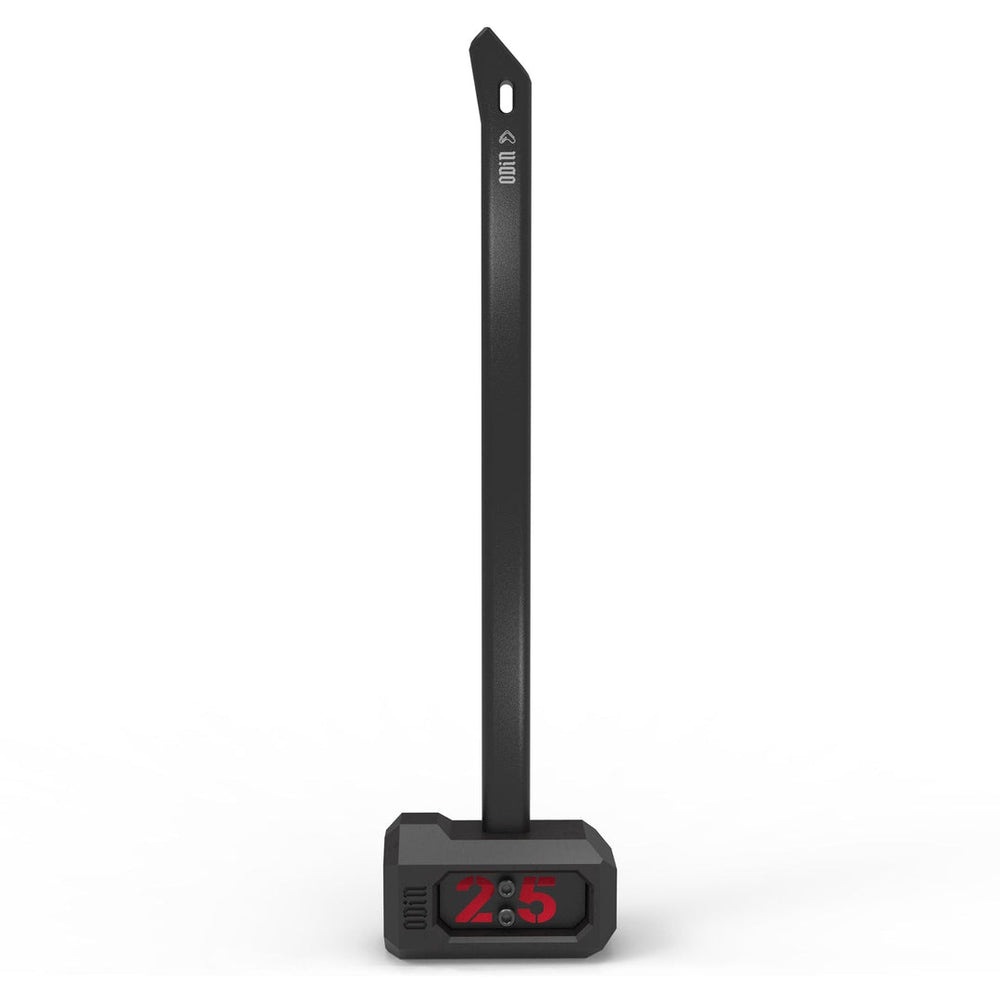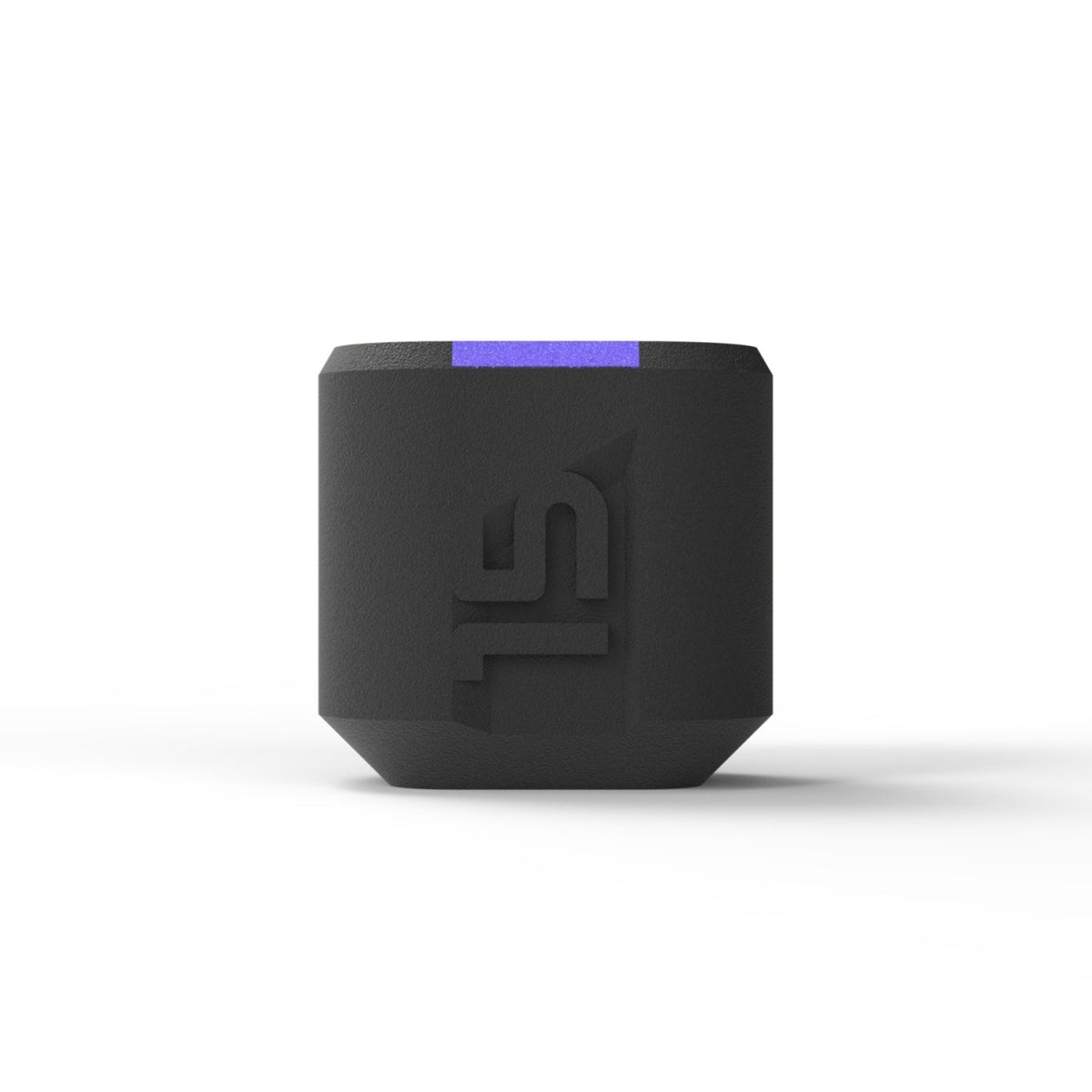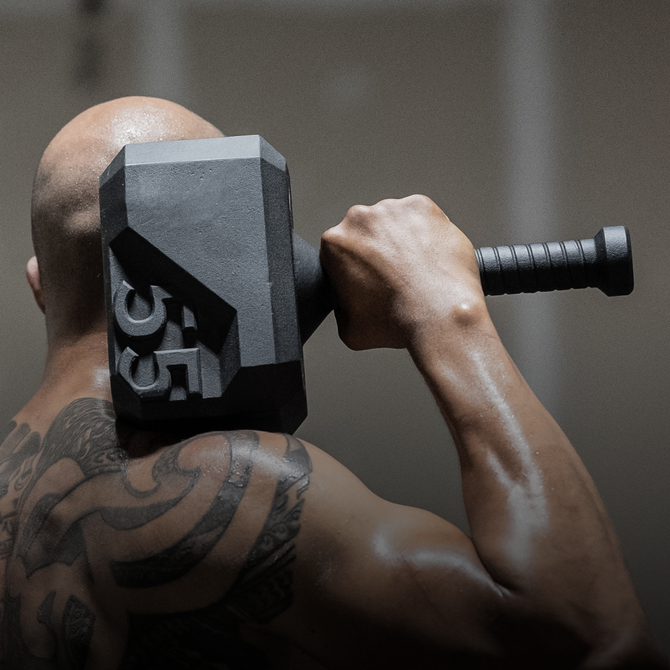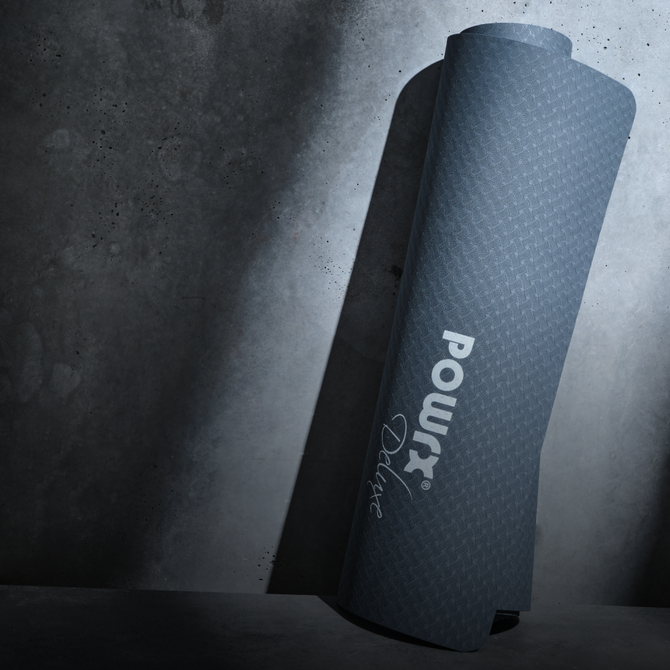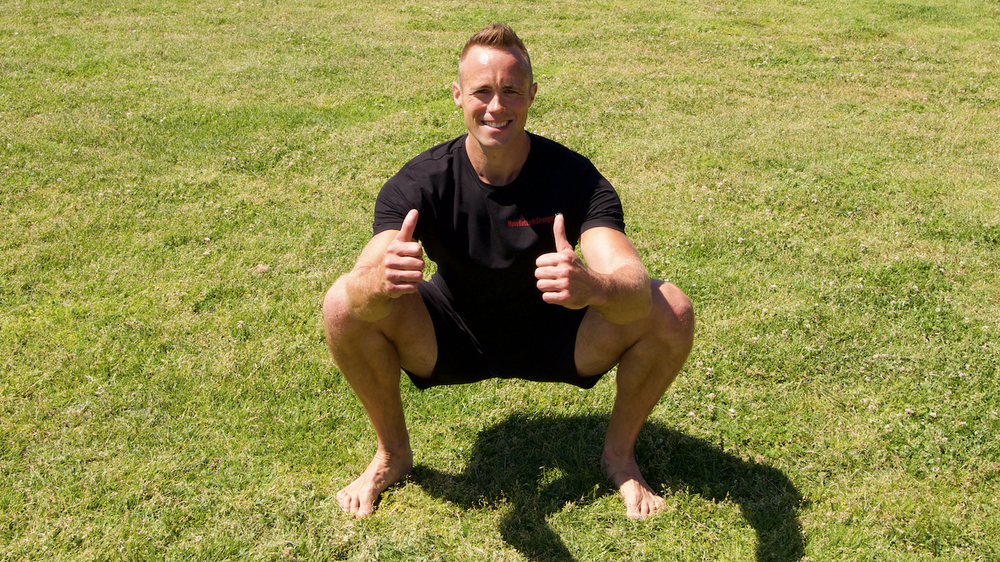If you’re looking to take your swing ability from OK to masterful while enjoying a plethora of accompanying performance improvements in other areas, this is for you.
A well-executed swing is the essential building block for cleans and snatches. The Hardstyle swing is the Great White shark of hip-hinge exercises. It’s at the top of the hip-hinge food chain for bang-for-buck training effectiveness. For example, heavy one-arm swings improve deadlift ability without a barbell being present in the program (up to double bodyweight deadlifts and with a swing protocol similar to session 3 of this program). Deadlifts do little for improving swing ability. Therefore, swings are a higher value hip-hinge exercise than deadlifts. I’m happy to have this conversation over a beer or matcha latte if I’ve already insulted any religious beliefs.
People who swing regularly (with proper technique) develop great strength in their low back, grip, torso and booty. A massive work volume can be accomplished in a short space of time making swings a go to for quick effective workouts. Swings complement other high-value exercises (get-ups, push-ups, jump roping, crawling, etc.) like good Napa red wine complements Welsh cheddar cheese.
The Hardstyle Swing Test
In 2015, Mark Reifkind (a.k.a. Rif) designed the Hardstyle swing test. He did so within his role as chief instructor of an international strength and kettlebell education school as a means of testing new instructors at live international certifications. In order to become a certified instructor, students had to pass a series of stringent kettlebell technique tests, strength tests then finally pass this swing test.
Hardstyle swing test: Ten one-arm swings every 30 seconds, 20 times. That’s 200 swings in 10 minutes. The kettlebell must be parked after every set of 10. So that’s 10 left, put it down. Ten right, put it down … and so on. The kettlebell must be swung to anywhere between belt and lower sternum height and must be parked like a pro after every set. Most female students had to complete this protocol with a 20kg and most male students with a 32kg. Subtract 4kg if you’re particularly small or light compared to most active folk. Subtract 4kg if you’re over 50. Subtract 8kg if both apply. That just about sums up the vast weight/sex categories.
In March 2015, I received a call from the head of this strength education school asking me to test the protocol to determine whether or not it was reasonable for any able-bodied person to pass given a few months of dedicated training. I loved it! After just 10 minutes with the 32kg, I was left in a sweaty heap on the floor and my glutes and abs were on fire. Perfect. More importantly, there was no way anyone with less-than-adequate swing technique could pass, so it served as a great requisite for students to become certified.
The first certification was due six months later (in September 2015) and I was to be one of the instructors. Creating programs is my jam, so to demonstrate how trainable the test was for others I developed this Ultimate Swing Program and pledged to pass the test at the live certification with 40kg. I enjoyed the training process so much that after fulfilling my oath, I made another pledge to pass it with 48kg in the next certification 12 months later (September 2016). As far as I’m aware there are three of us globally who nailed this test with 48kg. This program has helped numerous others of varied abilities make huge swing gains. This means significant gains in many other athletic abilities because it’s such a high-value activity.
The Hardstyle swing test was applied to hundreds of students in the U.S.A. and U.K. over the course of two years before the certifications morphed away from kettlebells and into general athleticism. I hope the Hardstyle swing test lives on regardless. Hats off to Rif for creating it because it’s a hell of a stand-alone workout and a great means of setting kettlebell ability benchmarks.
I learned a lot about swing training and technique during this 18-month journey to swing enlightenment. Over the years I’ve applied this program to many others of different abilities and have seen amazing results. For example, a 45-year-old female lawyer who knew how to swing struggled to complete the test with 8kg. Six months later she passed the test with 20kg and transformed into an athlete in the process.
Before diving into the program, here are some technical insights. The better your technique, the more effective every training session will be.
One-Arm Swing Technique Insights
The arm remains loose throughout. It helps to view the arm as an otherwise useless piece of rope that hangs from the shoulder with a kettlebell tied to the end. The grip is not a crushing power grip nor a loose fingertip grip. It’s a vice-like isometric hook grip where the fingers are wrapped around the handle just enough so the thumb can make contact with the middle and index fingers. If skin is damaged during swings, it’s because your fingers partially open and close causing friction between skin and the metal. You can train yourself to develop an immovable hook grip by frequently wearing cotton gloves for your swing practice — a technique employed by kettlebell masters of sport (GS). A hook grip of iron is essential for a good snatch.
Should the kettlebell forearm be supinated (thumb forward or up), neutral (thumb sideways) or pronated (thumb back or down)? As long as the shoulder remains packed (depressed and not protracted) it makes little difference. For me and most others, it’s slightly supinated at the top and slightly pronated at the bottom. Some people prefer to keep it supinated throughout because this helps them pack the shoulder at the bottom position, but it can also cause elbow pain from overextension. Try both and use whatever feels best.
.
Top Position
In the top position the kettlebell handle is somewhere between belt and lower sternum height. Your posture should be tall with both shoulders depressed, a proud chest and a long neutral neck (chin tucked in). The kettlebell floated up to arrive here so there’s no reason for your body to be twisted into rotation or holding a lot of tension. If both arms were Photoshopped away only a tall, symmetrical and proud torso and legs should remain — maybe with a little backward leaning if the kettlebell is heavy.
.
Backswing
Remain perfectly upright and let the kettlebell fall a few inches until it’s about 45 degrees from the body. Then all hell breaks loose. The latissimus dorsi ignites which aggressively accelerates the kettlebell downward/backward. At this stage it’s important to maintain your upright position for as long as possible, which should be just as your forearm makes contact with the pelvis. It’s a rookie mistake to hip hinge too early. This sends the kettlebell way too close to the floor and creates a very weak pattern that puts a great deal of undue stress on the low back.
Just as the forearm is about to make contact with the pelvis is when you shoot your butt back into an explosive eccentric hip hinge. The butt remains high and the shins remain upright during this backswing movement because this is a hip hinge action, not a squat. During the backswing, inhale while moderately contracting your pelvic floor and transverse abdominus. This creates considerable intra-abdominal pressure in the bottom position, so you’re like a coiled spring ready to lift off.
.
Bottom Position
At the bottom position the head should be in about the same place relative to the spine as it is in the top position: neutral with a long neck and a tucked in chin. You have a continuous line of myofascia from the top of your eyebrows to your toes via the back of your body (Thomas Myers’ Anatomy Chains). Forty percent of the power generated in the swing comes from fascia not contracting muscles (Carla Stecco’s Functional Atlas of Human Fascial System). Extending the neck at the bottom position by looking forward shortens your chain at one end while lengthening it further down, thus you’ve cheated yourself out of potential power.
Also, at the bottom position it’s important to maintain square shoulders and a proud chest. This is Hardstyle, not flow style or GS style. It’s your job to win the fight against rotation. A body that’s capable of resisting external rotational force is far better at producing rotational power in other activities. If you twist your torso at the bottom position, you’re setting yourself up to use rotation for creating power on the way back up. This cheats the hip hinge out of a job and you’ve missed the essence of Hardstyle – move with purpose.
Where should the free arm go at the bottom of a swing? I prefer my students to hold it out to the side. When the arm swings back and up it tends to pull the torso into rotation. That said, if you can swing your arm back while keeping your sternum pointing down to the floor with no rotation, crack on (most people can’t, though).
Needless to say, the rest of the spine should also be perfectly neutral here too. There are times and ways to train the spine to be bendy and fluid, but during high-tension high-volume swings is not it.
.
Upswing
The instance you reach the bottom position, explosively drive your feet through the floor. Unlike the top position, which is relatively restful, the faster you can rebound from your backswing to your upswing the better. As you’re driving your feet through the floor, you’re also increasing your tension-o-meter in your lower abdomen from medium to near max. This abdominal tension causes an exhale. The massive effort to create explosive movement ends when your hips and knees reach extension: tall posture, spine and neck long, proud chest, shoulders depressed and not protracted.
Sometimes people experience knee pain after an explosive set of swings which is often due to their knees snapping into over-extension at this point. If this applies to you, teaching yourself to engage your hamstrings as much as your quads and drive your heels down (not back) could be a gamechanger.
By this point the kettlebell should be traveling up through the 7 o’clock position. From here it floats peacefully up to the 8 or 9 o’clock position (belt-to-lower sternum height) before falling back down again with no influence from your arm whatsoever. Don’t rush this top part. The relative rest is necessary for repeatedly producing the appropriate power in the bottom half of the movement.
.
Masterful Swing Versus Good Swing
A key difference between a masterful swing and a good swing is the speed and acceleration at different phases. A swinger may have nailed all the other components such as body position, kettlebell trajectory and breathing. However, most good swingers maintain a pretty constant speed throughout with approximately the same rate of deceleration and acceleration at the bottom and top. Too much tension is held at the top position and not enough at the bottom.
A masterful swing starts by dropping gently letting gravity do its work. Then the kettlebell continues to accelerate to a speed faster than gravity would have taken it. The deceleration and acceleration at the bottom position are like dynamite. The actual effort here is far greater than that required to just swing the kettlebell forward — this is Hardstyle, after all. Then the deceleration in the top half of the upswing takes longer (meaning longer rest) because the kettlebell was traveling faster in the lower half.
Also, a masterful swinger completely ignores the kettlebell and the arm. Remember, it’s just a loose piece of rope dangling from the shoulder.
.
Feet & Footwear
Solid swing technique requires bare feet and a hard floor surface. The more cushioning present between skin and floor the more ground reaction force will be lost every time you drive your feet down. This means less power transferred up the chain and slower improvements in performance.
I prefer bare feet to minimalist shoes where possible because this facilitates better feeling of the floor and better ability to spread the toes. Feeling the floor allows you to apply pressure through the three points of the feet, which is necessary for creating the most stability thus producing the most power. All three points remain firmly planted through all parts of the swing and the front two are being drawn back to the heel creating an arch. I think training barefoot is optimal for all strength training, but I appreciate that some people are just more comfortable and feel safer with their feet locked inside foot coffins.
The Ultimate Swing Program
.
Pre-Swings
Start every session with a good 15- to 20-minute mobility flow that fully lubricates your major joints, activates your stabilizers and addresses weak links in your movement ability.
.
Session 1: Heavy Day
Goal:
Develop swing strength and power in grip, butt and torso facilitating a faster progression in session 2.
Protocol:
8–12kg heavier than session 2
3–5 single arm swings every 30 seconds, 40 times
Park the KB after every set
Alternate arms from one set to the next
Progression:
If / when you can perform 40 sets of 5 swings, increase load to 12kg heavier than session 2
When you increase load for session 2, do so here too so it’s always 8kg–12kg heavier
Comments:
This is the easiest of the three sessions due to the relatively long rest between sets.
.
Session 2: Medium Day
Goal:
Progressively build volume specific to the Hardstyle swing test
Protocol:
Part a) 8–10 single arm swings every 30 seconds, 20 times (10 minutes)
Part b) Then with the same KB, immediately into a further 10 single arm swings every 60 seconds, 10 times (10 minutes)
Park the KB and alternate arms after every set.
Progression:
Your ability to perform 10 swings every 30 seconds, 20 times with any given load marks a graduation with that kettlebell (part a goal). The fact that you can then swing the same KB for 10 reps, 10 more times but with more rest (part b) means you could nail the Hardstyle swing test with the same KB on any day of the week. The next time you do session 2, increase 4kg and drop reps to sets of 8 per 30 seconds.
Comments:
Graduation (200 swings) with any kettlebell in part a means that 8 reps per set (160 swings) with 4kg more weight is 100 percent achievable. It’s less overall volume if you do the math and feels easier due to the extra few seconds of rest per set. Part b exists to provide adequate overload. The extra rest between sets means you can make every set explosive, sharp and crisp. I think this boosts the adaptation process.
The hardest of the three sessions.
.
Session 3: Light Day
Goal:
Technique, energy system and conditioning development
Protocol:
8kg lighter than the KB you use in session 2
10 single arm swings every 30 seconds, 30 times. That’s 300 swings in 15 minutes.
Park the KB and alternate arms after every set.
Progression:
The reps and load in this session are fixed variables. The progressing variable here is your effort. Make the backswing more explosive like you’re trying to smash a hole in a fence behind your butt. Immediately drive your feet through the ground with thunderous effort while creating massive tension in the lower abdominal region. Then the kettlebell floats freely up to approximately lower sternum height offering a moment of slowness and peace before all hell breaks loose again. Your progressive goal in this session is to make as many of the 300 swings as powerful and perfect as possible. Alternatively, if you’re not feeling on top form just cruise through the 15 minutes at moderate effort and you’ll have still accomplished a great little training session.
Comments:
Now and again, wear cotton gloves for this session (which may call for an even lighter KB). The reduced friction helps develop an isometric hook grip like that of a vice.
.
Post Swings
So far, you’ve spent 15–20 minutes warming up. Then a further 15–20 minutes swinging (depending on which session you’re on). The swing is such a high-value exercise that you could just stop and do some stretching now. These three sessions per week alone would offer significant and noticeable positive changes. However, if you have the time, energy or desire you could add another 10- or 20-minute segment doing anything that lives in another movement pattern (crawling, squats, push-ups, get-ups, bent press, etc.).
FAQs
Q: Can I train other things at the same time?
A: Yes, but your hip-hinge pattern is covered so I wouldn’t advise doing anything else in that movement family with much intensity or volume (deadlifts, power cleans, hip thrusters, etc.). If you added some get-ups, squats, crawling and/or push-ups onto the end of every swing session, your program would cover all the bases.
Q: Can I just do two sessions per week?
A: Yes, that’ll work. But three is most effective. Just keep cycling through all three sessions, doing two per week, picking up where you left off from one week to the next. One session per week won’t get you anywhere fast.
Q: What if I don’t have increments of 4kg kettlebells available?
A: You can’t do this program but try with what you have and see what happens.
Q: How long should I carry out this program?
A: Three weeks will produce noticeable positive results. Four weeks should get you hooked if you like to see the numbers rise. Most programs stop working after 5–7 weeks but this one offers relentless gains. Just be sure to include regular breaks for 1–4 weeks after every 5- to 7-week period. Over the course of 18 months, this same pattern took me from 32kg to 48kg. I almost always did three sessions per week during swing phases because I’m impatient and wanted the fastest gains.
.
Happy swinging, folks! Thanks for reading.
.
Phil McDougall
IG: @phil.mcdougall
PS. Chuck Norris does GS (Girevoy Sport) style, not Hardstyle. This prevents him pushing the Earth out of orbit during the upswing. Hahahaha, I’m funny. Tumbleweed…
Kettlebell Kings has the most highly & frequently reviewed kettlebells in the world. We have free shipping in the US & Canada (www.kettlebellkings.com), Europe (www.kettlebellkings.eu) and Australia (www.kettlebellkings.com.au). Check out our 4,000 reviews for quality and customer service here!
